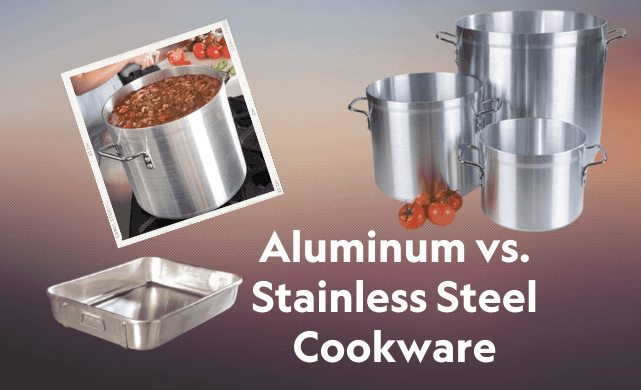Most commercial cookware found in institutional or foodservice operations is either stainless steel or aluminum. Occasionally you may find a cast iron or carbon steel pan in a commercial kitchen, but for the most part it will be stainless, aluminum or a multiply blend of the two. You’ll find stock pots, roast pans, fry pans and sauce pots in both types of materials. If you don’t have much experience in the kitchen with both types of cookware, it’s hard to know which is best. And it’s important to know your menu too, as different types of foods affect the materials.
Here’s a quick run-down of both materials pros and cons to help you decide which is best for your foodservice operation.
Stainless Steel – Pros:
Highly durable – long lasting and does not scratch easily
Holds Heat – good for preparing foods at low heat with long cook times
Non-reactive – will not react to acidic foods like tomato sauce or vinegars
Lighter weight than cast iron
Stainless Steel – Cons:
More expensive than aluminum
Poor Heat conductor
Hot spots - thin gauge pans may scorch product, be sure to find pans with heavier gauge or multi-ply bottom.
Aluminum – Pros:
Excellent heat conductor – heats up fast and evenly
Affordable – can find high quality aluminum cookware at prices lower than stainless steel
Lightweight – easier to transport and handle
Aluminum – Cons:
Reactive – acid degrades aluminum and it is best to not use this with tomatoes, vinegars or citrus as it can discolor the food and cause a metallic taste
Prone to discoloration – oxidation can cause dark grey or black marks on aluminum cookware
Easier to dent or become misshapen – depending on the gauge of the aluminum, it can be easy to dent or have the cookware shape malform from being handled too roughly.
While each material has it’s pros and cons, they are both good choices for the commercial foodservice operation, with many large kitchen operations using both aluminum and stainless steel commercial cookware.
